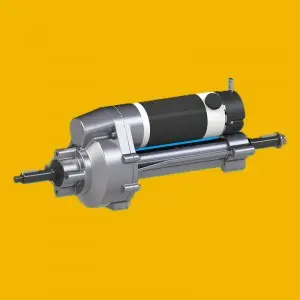The transaxle is an important part of many vehicles, performing the critical function of transferring power from the engine to the drive wheels. However, debate continues over whether the transaxle adds stress to the powertrain, resulting in powertrain losses. In this blog, we aim to unravel this question and shed light on the impact of the transaxle on powertrain performance.
Learn about transaxles:
Before we get too far into this, it’s crucial to have a thorough grasp of the concept of a transaxle. Essentially, a transaxle is a mechanical device that combines the functions of the transmission, differential, and axle into an integrated unit. It plays a vital role in distributing power between the front and rear axles of vehicles in front-wheel drive or all-wheel drive configurations.
Powertrain losses:
To determine if the transaxle is causing powertrain loss, we must first understand what powertrain loss means. Powertrain losses are the power consumed or lost in transferring energy from the engine to the wheels. It can occur due to a variety of factors, including friction, heat, mechanical inefficiency, and parasitic losses.
Effect of transaxle on powertrain losses:
While a transaxle does introduce additional components into the powertrain system, potentially increasing friction and complexity, the overall design and efficiency of a modern transaxle must be considered.
Modern transaxles are engineered to minimize powertrain losses through the use of advanced lubricants, optimized gear ratios and the implementation of efficient differential designs. These measures are designed to minimize friction and parasitic losses associated with the transaxle, ultimately ensuring optimal power delivery to the wheels.
Additionally, advances in technology have led to innovative solutions such as electronic limited-slip differentials, torque vectoring and intelligent all-wheel drive systems. These enhancements enable precise power distribution, reducing powertrain stress and reducing power losses.
Importance of maintenance:
While transaxles have been developed to minimize powertrain losses, it is critical that they are maintained and serviced regularly to ensure optimal performance. Proper lubrication, regular inspections and timely repairs when needed are key to maintaining transaxle efficiency and minimizing powertrain losses.
in conclusion:
In summary, modern transaxles, despite their complexity, are designed to minimize powertrain losses. Through advancements in design and technology, manufacturers strive to reduce friction, reduce mechanical efficiency, and maximize power transfer to the drive wheels.
However, it is worth noting that regular maintenance and upkeep play a vital role in extending the efficiency of the transaxle and minimizing powertrain losses. By adhering to manufacturer guidelines and taking proactive measures, vehicle owners can keep the transaxle in optimal condition, ensuring efficient power transfer from the engine to the wheels.
Ultimately, if properly maintained and designed, a transaxle will contribute to a smooth and efficient powertrain without adding significant stress or causing excessive powertrain losses.
Post time: Oct-09-2023

